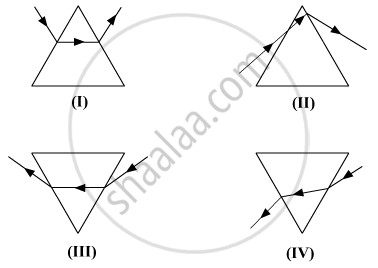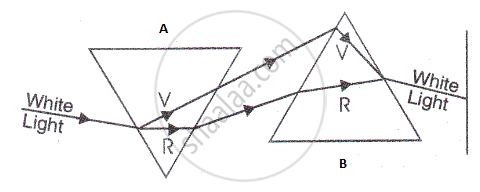Advertisements
Advertisements
प्रश्न
While performing the experiment to trace the path of a ray of light passing through a glass prism, four students marked the incident ray and the emergent ray in their diagrams in the manner shown below. 
(A) I
(B) II
(C) III
(D) IV
उत्तर
(C)
When light goes from rarer medium to denser medium; it bends towards the normal and vice-versa. This condition is fulfilled in figure (III).
APPEARS IN
संबंधित प्रश्न
A beam of white light is shone onto a glass prism. The light cannot be:
(a) deviated
(b) dispersed
(c) focused
(d) refracted
The coloured light having the maximum speed in glass prism is:
(a) blue
(b) green
(c) violet
(d) yellow
You are given a disc divided into seven sectors with colours violet, indigo, blue, green, yellow, orange and red in them. What would be its colour when it is rotated rapidly?
In an experiment to trace the path of a ray of light through a triangular glass prism, a student would observe that the emergent ray
(a) is parallel to the incident ray.
(b) is along the same direction of incident ray.
(c) gets deviated and bends towards the thinner part of the prism.
(d) gets deviated and bends towards the thicker part (base) of the prism.
Complete the ray diagram given below to show the nature of light produced on the screen.
The completed ray diagram is as shown below:

Draw a labelled diagram: Dispersion of light through a prism.
When white light enters a glass prism from the air, the angle of deviation is least for ____________.
Why do we see a rainbow in the sky only after rainfall?
Assertion: We can see the rainbow in the sky when the rain starts falling after a spell of bright sunlight.
Reason: The rainbow is formed due to the dispersion of light.
